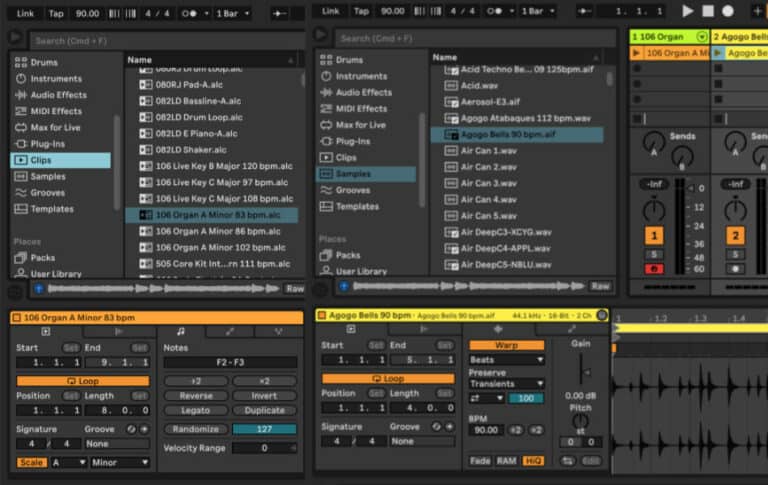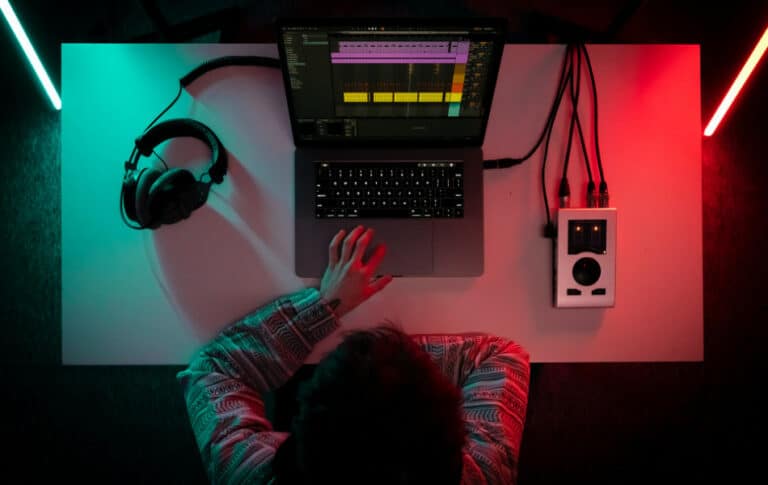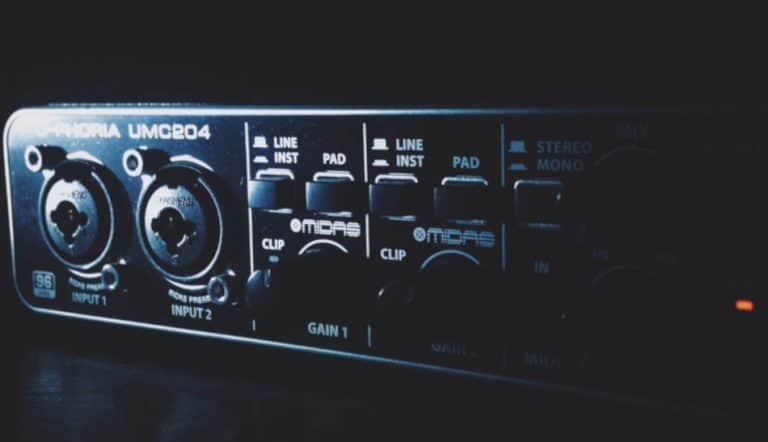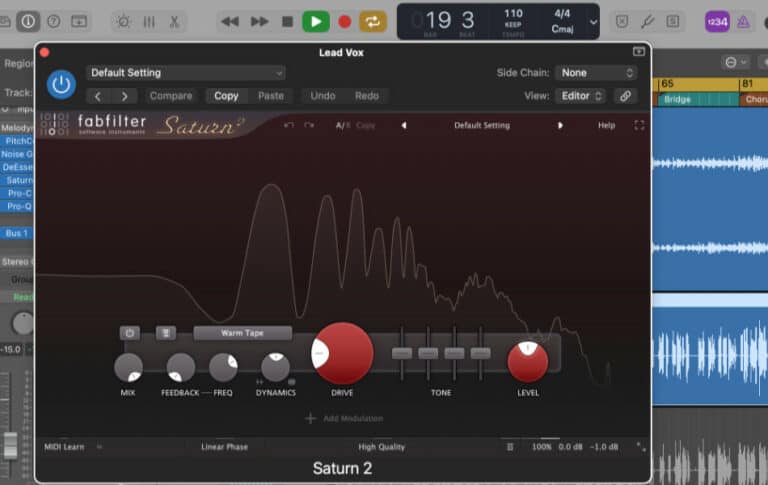What Does DAW Stand for in Recording and Music Production?
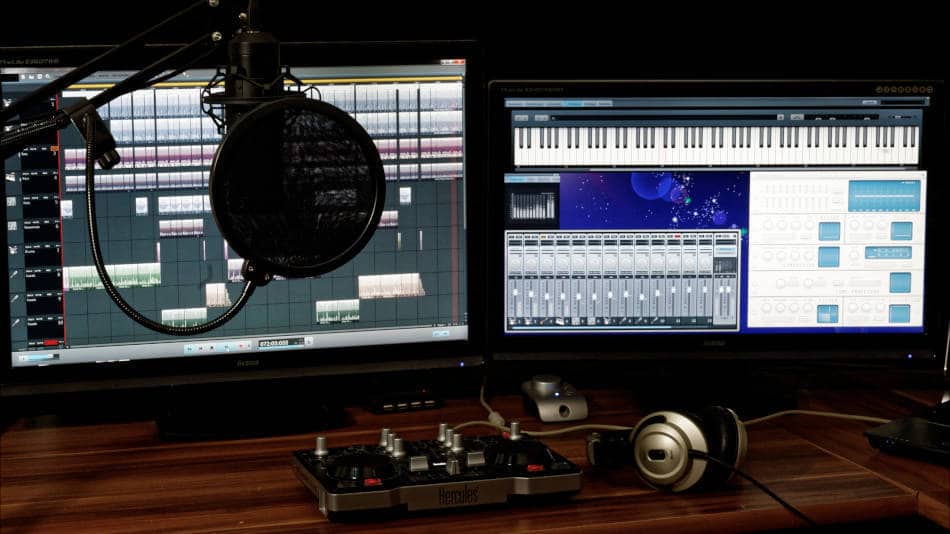
Even if you are just starting off with recording and music production you will probably have seen the letters DAW or heard people talking about “Daws”.
I found this really confusing for a long time so I thought I would write about what I have learned in the hope that it might help people who are as confused as I was.
What Does DAW Stand for in Recording and Music Production? DAW stands for Digital Audio Workstation. This is usually a software program that lets you record, edit and mix audio (sounds), e.g. voice or instruments. In addition, DAWs can also let you record, edit and mix digital music information from hardware instruments (those in the real world) and virtual instruments (inside your computer), which is known as “MIDI”. The audio and MIDI is recorded onto separate tracks and mixed to produce an audio file that can be shared with others.
When I was trying to get started with my home studio (which seems like quite a while ago now) one of the things that totally confused my was the software that people were using to make music. This software has come to be known as a digital audio workstation, usually abbreviated to DAW.
The term “DAW” wasn’t so commonly used when I was getting started. People often talked about “sequencers”, “audio”, and “midi”, and about exporting or importing audio and it was very confusing. To make matters worse there seemed to be an endless variety of software objects called “plug-ins” that did all sorts of things that I didn’t understand.
I want to take a basic look at what a “DAW” is and what it should be able to do for you. Whether you are making songwriting demos or techno tracks, talking books or podcasts, you will need a DAW of some sort to record and edit your recordings ready for consumption by the listening world.
The Essential Features of DAW Software
There used to be quite a lot of variety in the features of the music production software packages that were available. Over time the companies that produce this software watched each other and incorporated features from their competitors. This means that that now most of the DAW packages you can buy have very similar features.
This is understandable since no-one wants to lose out to competitors because the competitor provide customers with something that they don’t.
The good news is that this means you don’t have to worry so much that a DAW software package might not do something that you would like it to.
So what do most DAW software packages offer?
- A Sequencer
- Audio and Midi Plug-ins
- A Mixer
A Sequencer
In the olden days the heart of your recording studio would be a tape recorder on which you recorded all the voices and instruments to be edited and mixed later.
Professional-quality tape recorders would let you record multiple tracks and you may have seen TV programmes or YouTube clips where the Beatles, Beach Boys, Pink Floyd and others talk about how they used these tape recorders in all sorts of ways to produce amazing records.
One of the main problems for the home studio in those days was that these professional-quality tape recorders were very expensive and took up a lot of room.
By the early 1980s you could buy multi-track cassette recorders but these tended to be used to make rough demo recordings to guide musicians for recording in professional studios. Modern DAW software can be fairly inexpensive and lets you produce professional-quality results in your home studio.
The sequencer part of the DAW is similar to these tape recorders that were used for recording in the past. In most DAWs the sequencer represents a piece of recording tape that starts at the left-hand side of the computer screen and moves along like tape as you record the various tracks of your music or voiceover.
The sequencer enables you to record between 16 and unlimited separate tracks to be mixed later into a finished piece. The audio and MIDI that is recorded onto the tracks can be edited visually, which can help beginning producers who aren’t confident about trusting their ears to make judgements.
This can be one of the disadvantages of sequencer recording as you may be tempted to edit your production with your eyes rather than your ears.
Something that confused me about the sequencers in DAW software was that I knew there were also hardware sequencers and they didn’t seem to have very much in common.
The hardware sequencers I had seen often had between eight and sixteen buttons on a box, often with lights in or next to them. These buttons were the steps in the sequence and you could switch the steps on or off to make different patterns of sound.
The sequencers in DAW software could do this but the main thing that most of them featured was the ability to record audio (like a tape recorder) onto the sequencer tracks, and I couldn’t see how this related to the sequencer.
As time has passed I’ve come to realise that the audio recordings on the track are kind of like the steps in the hardware sequencer, and the DAW sequencer lets you arrange the audio in the track.
Audio tracks don’t have to be one long recording, you can record audio clips of various lengths and arrange them on the track. In the past it seemed that these audio clips were arranged one after the other with no gaps in between them. Now I notice that things like drum beat sounds are arranged on the track with large spaces in between them, just like the steps on the old hardware sequencers.
I say “old hardware sequencers” but hardware sequencers are becoming very popular. People are moving more and more to the use of hardware synthesizers and other electronic musical instruments in addition to using software versions inside the DAW (but more on this later).
Audio and MIDI Plug-Ins
What is a plug-in? A plug-in is a small software program that extends the functionality of the DAW. It was the use of this generic term “plug-in” that confused me for so long. If the people writing about these things in the computer music magazines I was trying to read had talked about each as a specific kind of instrument or effect, I think I would have found it much easier.
As I mentioned in my gripe above, plug-ins are usually some kind of software instrument that lets you produce a sound, or some kind of effect that lets you manipulate the sound the instrument is making or the audio you have recorded.
Some of these plug-ins will probably be provided as a core part of your DAW software package, while others will need to be obtained separately.
Software instrument plug-ins include synthesizers of various kinds, samplers and drum machines.
There is a much bigger variety of effect-type plug-ins. Examples for processing audio and sounds produced by software instruments include equalizers, compressors, delay/echo and reverb units, filters, and auto-tune. There are also arpeggiators and sequencer plug-ins (in addition to the main sequencer – confusing) that let you control the software instruments. These two are often referred to as MIDI plug-ins.
A Mixer
The third main part of DAW software is the mixer. This lets you make adjustments to the individual tracks you have recorded to get a final mix that is pleasing to the ear. Whatever that means for you.
Whenever musicians or record producers are interviewed the always seem to be sitting in front of a giant mixing desk that is dominated by dozens of fader knobs. Sometimes they are shown moving these faders up and down to adjust the volume of the various tracks, and sometimes the faders move on their own.
The mixer in the DAW is a software version of this mixing desk. A professional recording studio will use a DAW of some type (usually Pro Tools) and the fader knobs on the mixing desk will be connected to the software faders in the DAW.
The mixer takes the sounds from the various tracks and routes them through a final volume control (so that you can adjust the volume of the final mix) to produce the overall sound of your recording. This final mix can then be exported or “bounced” or “rendered” to make an audio file that you can save on your computer, burn to a CD, or upload to your favorite streaming service.
You Need a Daw in Your Home Studio
Whether you want to make music in your home studio, or use your studio to make voice recordings for online education or podcasts, you really need a DAW to help you do it. The basic versions of each of the popular DAW packages can be quite inexpensive, and some packages are actually free.
You can read about why I think Ableton Live is a good choice of DAW for beginners in this article.
We also looked at what we think is the best free DAW software package, and you may be surprised to learn what that was at the time of writing.
